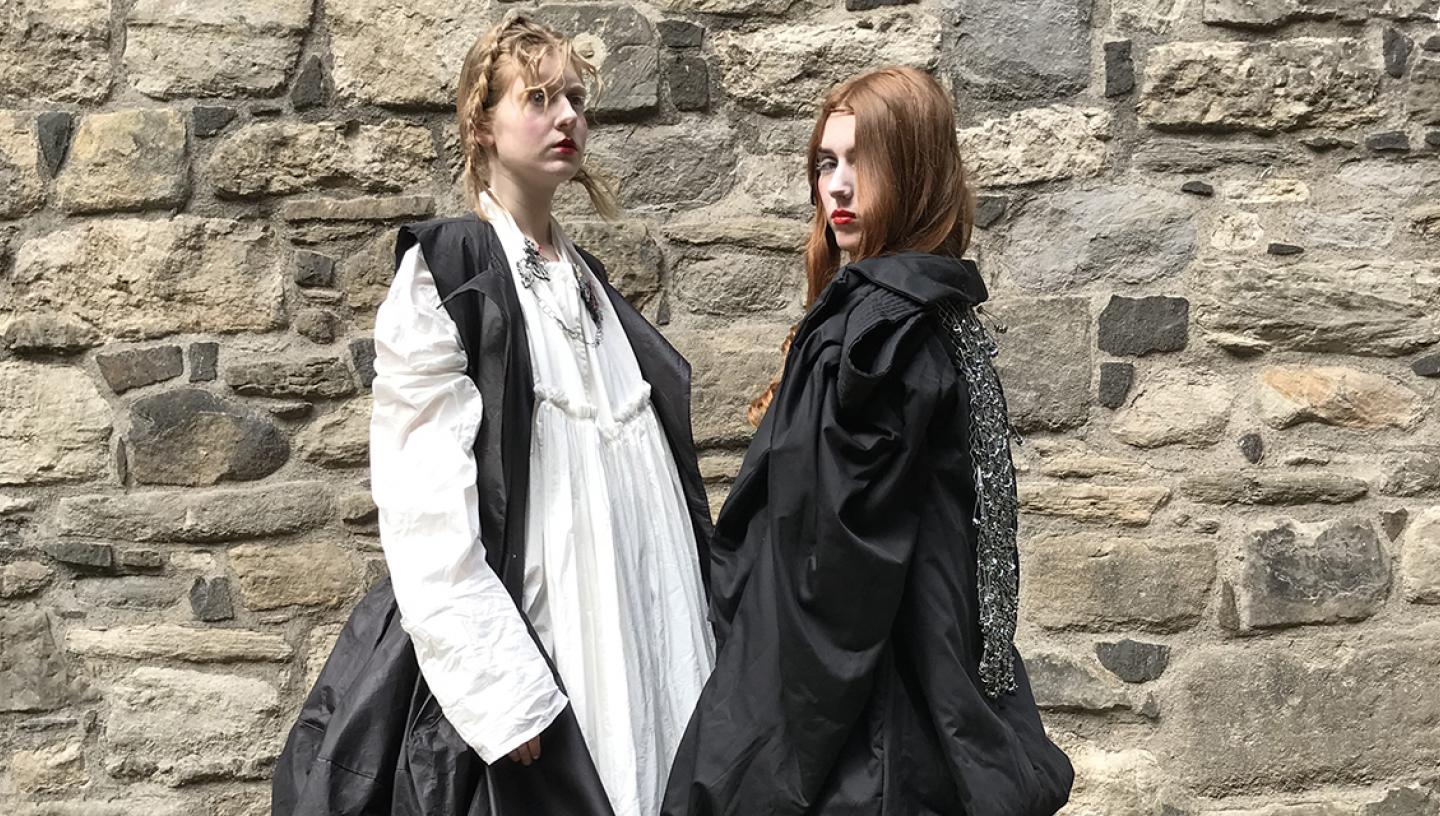
Essential Information
| Location |
Queen's House
|
|---|---|
25 Jun 2019
In the Armada Portrait, Elizabeth I is adorned with multiple strings of pearls, sumptuous velvets, silk ribbons and gold embossed designs. It is a painting packed with symbolic meaning - and Renaissance bling!
By Matilda Pye, National Outreach Curator
We invited jewellery designer, Silvia Widenbach to visit the painting in the hope that the dazzle and performance of craftsmanship on display might inspire new work from her jewellery and silversmithing students at The Glasgow School of Art.
Staging Splendid Bodies in early modern Scotland and England became a multi-layered creative brief. Its aim was to unpack adornment and fashion as tools for the expression of love, power and politics. These themes resonate with the wider collection of Tudor and Stuart portraits and stories of the Queen’s House.
The results of this dynamic collaboration with more than 150 staff and students include new work, an exhibition in The Glasgow School of Art, an amazing photo shoot at Stirling Castle, (the childhood home of Elizabeth I’s cousin Mary Queen of Scots and a seat of James I of England and VI of Scotland), a catalogue and a symposium at the Queen’s House on Friday 28th June.
The students used the painting and the visual culture of the period to unpack female histories and to explore and debate their contemporary relevancies in their own work as students of textiles, fashion, silversmithing and jewellery.
'The project was a wonderful opportunity to experience a live brief connected to the wider industry. I loved the collaborative aspects'
- GSA, Silversmithing Student
The symposium at the Queen’s House brings together a range of experts and creative practitioners to explore themes of splendour, gender, bodies, fashion and performance.
‘I have the heart of a man, not a woman’
- Elizabeth to the Scottish Ambassador in 1581
One of the many intriguing symbolic aspects of the Armada Portrait is the bringing together of the masculine and feminine. Elizabeth fashions herself as both Queen, represented by her crown, and Prince, depicted in the flamboyant ostrich feather fan she holds (an emblem of the Prince of Wales).
The painting was created around 1588 when the queen made clear she did not mean to marry or have children. She was then in her mid 50s. This broke all societal expectations of the role of the Queen to give birth to an heir.
The painting serves to document a defiant female body politic. This powerful statement of a sovereign 'Virgin Queen' inspired a later queen, Queen Christina of Sweden (1626-1689), to also confront society’s norms:
'Instead I thought of becoming human'
Christina also wanted to rule without the need or the desire to marry or have children and she invoked Elizabeth as a role model. We are delighted that artist Anja Olofgörs will stage her unique performance about the life history of Queen Christina at the Queen’s House. The work reflects on Christina’s decisions to live her best life on her own terms in which she concentrates, on becoming human.
The performance will take place in the Queen’s House as part of the programme on Friday 28th June.